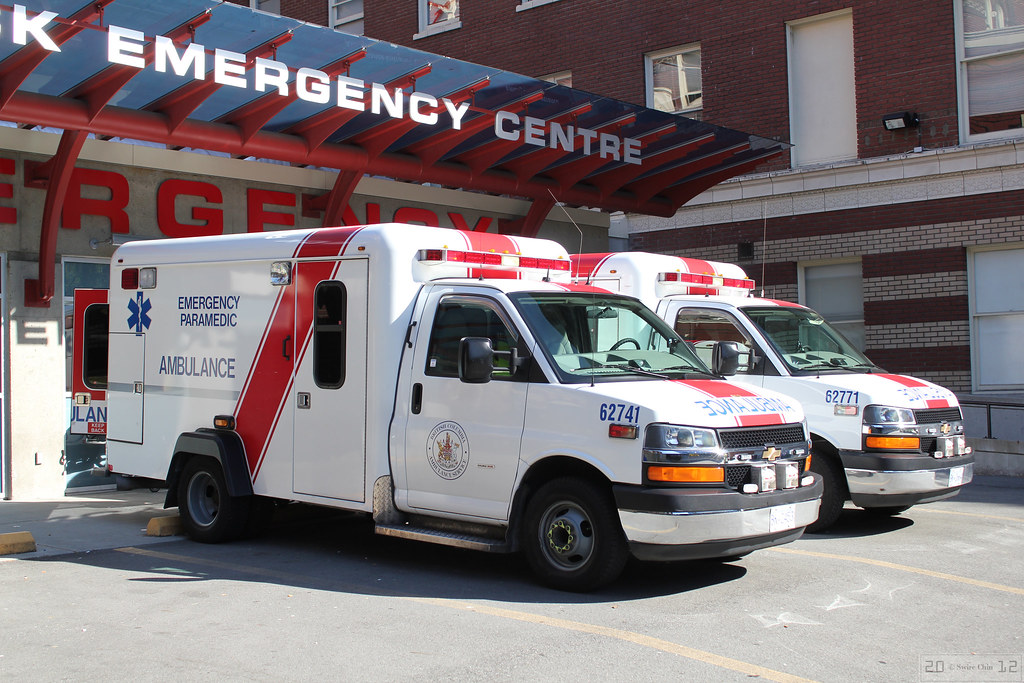Dynamic deployment models for high-performance Emergency Medical Services
DOI:
https://doi.org/10.25071/d4bd5440Abstract
While the emergency medical services profession has evolved substantially, the way that paramedic resources respond to these incidents has stayed relatively the same, mostly mirroring deployment models utilized by fire departments. The problem is that fire and paramedic services require two very different types of staffing. Fire departments are mainly tasked with protecting property, and therefore follow a static 24/7 deployment model due to predictable demand (PRPS, 2020a). This is not the case however with paramedic services. While fire departments focus on property, paramedics requires a greater focus on protecting people and health. Over the past decade, there has been a staggering increase in medical calls, which has overwhelmed paramedic services across Canada. During the COVID-19 pandemic, most of the world saw ambulance call volumes and response times increase by up to 50% (Amiry & Maguire, 2021), especially for life-threatening emergencies (Prezant et al, 2020). It proves the importance of keeping staffing and deployment planning current to adequately deal with these surges. With regular instances of little to no ambulances available, even on regular days, there need to be improved methods identified for better resource management. For the purposes of this study, the deployment plans at two of Ontario’s largest and busiest paramedic services (referred to as Service A and Service B) were examined, to determine how different deployment models help paramedic services adapt to their call volume and remain prepared for larger-scale emergency responses.
References
Agarwal, G., Lee, J., McLeod, B., Mahmuda, S., Howard, M., Cockrell, K., & Angeles , R. (2019). Social factors in frequent callers: a description of isolation, poverty and quality of life in those calling emergency medical services frequently. BMC Public Health, 19(684). Retrieved February 8, 2022, from https://bmcpublichealth.biomedcentral.com/articles/10.1186/s12889-019-6964-1.
Al Amiry, A., & Maguire, B. J. (2021). Emergency medical services (EMS) calls during COVID-19: Early lessons learned for systems planning (a narrative review). Open Access Emergency Medicine, Volume 13, 407–414.
Ambulance Act, RSO 1990, c A.19. Retrieved on 2022-03-14
Andrew, E., Nehme, Z., Cameron, P., & Smith, K. (2019). Drivers of increasing emergency ambulance demand. Prehospital Emergency Care, 24(3), 385–393.
Beck, E., Craig, A., Beeson, J., Bourn, S., Goodloe, J., Moy, H. P., Myers, B., Racht, E., Tan, D., & White, L. (2012). Mobile Integrated Healthcare Practice: A Healthcare Delivery Strategy to Improve Access, Outcomes, and Value. ms, Chicago, IL. Retrieved March 16, 2022, from http://www.naemt.org/Files/MobileIntegratedHC/Medtronic%20MIH%20Whitepaper.pdf
City of Toronto. (2021, September 10). Toronto Paramedic Services. City of Toronto. Retrieved February 8, 2022, from https://www.toronto.ca/city-government/accountability-operations-customer-service/city-administration/staff-directory-divisions-and-customer-service/toronto-paramedic-services/
CUPE. (2020, March). Under pressure: A statistical report on paramedic services in Ontario. Canadian Union of Public Employees (CUPE). Retrieved February 8, 2022, from https://cupe.ca/under-pressure-statistical-report-paramedic-services-ontario.
Edgerly, D. (2013, October 8). Birth of Ems: The History of the Paramedic. Journal of Emergency Medical Services. Retrieved March 13, 2022, from https://www.jems.com/administration-and-leadership/birth-ems-history-paramedic/.
Elrod, J. K., & Fortenberry, J. L. (2017). The hub-and-spoke organization design: an avenue for serving patients well. BMC Health Services Research, 17(457). Retrieved February 8, 2022, from https://bmchealthservres.biomedcentral.com/articles/10.1186/s12913-017-2341-x.
Emergency Management and Civil Protection Act, RSO 1990, c E.9, <https://canlii.ca/t/53nmt> retrieved on 2022-03-14
Emergency Management Ontario, & Ontario Ministry of the Solicitor General, Ontario Critical Infrastructure Assurance Program Strategy (OCIAPS) (2021). Toronto, ON.
Enayati, S., Mayorga, M. E., Rajagopalan, H. K., & Saydam, C. (2018). Real-time ambulance redeployment approach to improve service coverage with fair and restricted workload for EMS Providers. Omega, 79, 67–80.
Huang, C.-H., Chen, W.-J., Ma, M. H.-M., Lai, C.-L., Lin, F.-Y., & Lee, Y.-T. (2001). Ambulance Utilization in Metropolitan and Rural Areas in Taiwan. Journal of the Formosan Medical Association. Retrieved February 8, 2022, from http://www.fma.org.tw/jfma/PDF/2001-100/issue_9/Article_1.pdf.
Lam, S. S. W., Ng, Y. S., Lakshmanan, M. R., Ng, Y. Y., & Ong, M. E. H. (2016). Ambulance Deployment under Demand Uncertainty. Journal of Advanced Management Science, 4(3). Retrieved February 8, 2022, from https://www.researchgate.net/profile/Khanungnit-Hnuchek/publication/283202340_Ambulance_Deployment_under_Demand_Uncertainty/links/5e115007299bf10bc390bf16/Ambulance-Deployment-under-Demand-Uncertainty.pdf.
Lam, S. S., Zhang, J., Zhang, Z. C., Oh, H. C., Overton, J., Ng, Y. Y., & Ong, M. E. (2015). Dynamic ambulance reallocation for the reduction of Ambulance Response Times using system status management. The American Journal of Emergency Medicine, 33(2), 159–166.
Ministry of Health. (2022). Land Ambulance Response Time Standards. Toronto. Retrieved from https://www.health.gov.on.ca/en/pro/programs/emergency_health/land/responsetime.aspx#:~:text=The%20ministry%20has%20expanded%20on,and%20patient%20outcome%2Dbased%20indicators.
Ontario Ministry of the Solicitor General. (2021). Emergency Management Framework for Ontario. Retrieved from the Emergency Management Ontario website: https://emergencymanagementontario.ca/sites/default/files/content/emo/docs/Emergency_Management_Framework_2021_EN_Accessible.pdf
Peel Region Paramedic Service. (2020). (publication). Analysis Report for Peel Regional Paramedic Services: Long Term Facilities Capital Planning. Mississauga, ON: Region of Peel. Retrieved February 8, 2022, from https://pub-peelregion.escribemeetings.com/filestream.ashx?DocumentId=7693.
Prezant, D. J., Lancet, E. A., Zeig‐Owens, R., Lai, P. H., Appel, D., Webber, M. P., Braun, J., Hall, C. B., Asaeda, G., Kaufman, B., & Weiden, M. D. (2020). System impacts of the COVID‐19 pandemic on New York City’s Emergency Medical Services. Journal of the American College of Emergency Physicians Open, 1(6), 1205–1213.
Region of Peel. (2019). About peel paramedics. Paramedic Stations – About Peel Paramedics – The Region of Peel – Region of Peel. Retrieved February 8, 2022, from https://www.peelregion.ca/paramedics/about-para/stations/
Scott, G., Olola, C., Toxopeus, C., Clawson, J. J., Johnson, A., Schultz, B., Miller, K., Richmond, N., Robinson, D., Zavadsky, M., Burnette, L., Barron, T., & Patterson, B. (2016). Characterization of Call Prioritization Time in a Medical Priority Dispatch System. Annals of Emergency Dispatch & Response, 4(1). Retrieved March 13, 2022, from https://www.aedrjournal.org/characterization-of-call-prioritization-time-in-a-medical-priority-dispatch-system.
Toronto Paramedic Services. (2021). Paramedic Services Incident Data. Toronto. Retrieved March 13, 2022, from https://ckan0.cf.opendata.inter.prod-toronto.ca/tr/dataset/paramedic-services-incident-data

